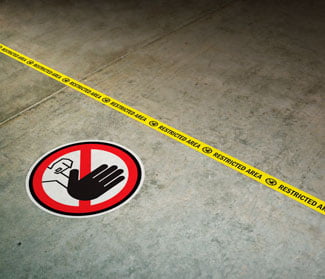Lean and Safety Intersect at Miller Fabrication
03
February,
2023
2 MINUTE READ

The future is coming, and Miller Fabrication Solutions is setting itself up to be a part of it. The Brookville, Pennsylvania, company is no stranger to change. What started in 1963 as a modest welding facility is now a leading metals manufacturing partner for original equipment manufacturers. The company uses quality automation, strategic robotics, lean processes, and sustains an adept and safe workforce. As part of its progressive success, the Miller team credits hard work, ingenuity, and passion. At Miller, it's not only about doing the right things right. It's about making them better each time.
Opportunities with Change
When Eric Miller's grandfather started Miller Fabrication, steel mills were thriving. Those times have changed. "Steel mills went away and that presented an obvious challenge," said Miller, who became president in 2018. "We decided to move on; into contract manufacturing of original equipment."
Making the switch to provide metal fabrication services to industrial original equipment manufacturers (OEM) fueled growth for the company. In 2000, the company built a facility to house its paint line. This allows Miller Fabrication to deliver a full, finished product to clients, who are Fortune 500 and 100 companies.
"Maintaining a safe and healthful work environment isn't just an idea, it's our top priority," Miller said. Crediting his grandfather's foundation, he said a safe work environment increases production and elevates the company's output quality. "We take raw materials, typically metal, and work with them from processing to finishing," he said. "We aim to deliver to customers high-quality parts on time."
Through trial and error, Miller Fabrication learned to focus on consistent work using lean methodology. This serves the company well to exceed complex project measures now and well into the future.
"Safety is a big concern," Miller said. "We work with big parts. Demand caused daily fluctuations and we were in constant fire-fighting mode. Now our load-level schedule is our priority."
 Quality Control and Communication
Quality Control and Communication
Achievements were made through improving organization, cleanliness, and lean production for quality control. Miller Fabrication uses smart manufacturing throughout its metal fabrication, welding, machining, and on through automation. It uses 4.0 technology for lean inventory management, on-time scheduling, and more.
"There are a lot of benefits from being organized and having a safety mindset," Miller said. "We've embraced the lean model, which is the tip of the iceberg. It truly drives customer value. It can be very challenging to execute sustainably. A mowed yard doesn't stay mowed. You've got to weed the garden. The secret sauce is being disciplined."
Rich Steel is the director of business process at Miller Fabrication Solutions. He oversees operations on a macro level. Working at Miller Fabrication for 15 years, he can attest to the importance of lean strategies for safety and efficiency. Miller Fabrication had attempted lean in the past but was not sustaining it. The company restarted its lean program in 2012 and has stayed on the lean path consistently since.
"5S visual management, clearing aisleways ? it all helped with efficiently allowing us to focus on change over time," Steel said. The company uses communication and training to keep the workflow going. Steel said, for example, that robotic areas have emergency stop features and work boundaries are lined with floor marking.
"We saw waste reduction and smoother operations by being better prepared for the next job," Steel said. "The flow of materials, and producing the right quantities versus mass production ? all made for us to change over more efficiently."
"We're nowhere near where we were before. There is a clear, remarkable difference from when we started," Miller said. And yet, Miller said, there is still room for growth. He sees Miller's future bright and clear. "We challenge ourselves. We push forward a lot."
RELATED RESOURCES

Get the Most Out of Toolbox Talks: Workplace Safety and Communication
What Are Toolbox Talks? Toolbox Talks, short safety meetings typically held at the job site before the ...
Read
Understanding Arc Flash: The Shocking Truth About Electrical Injuries
Electrical workers consider shocks as part of their job and normal, according to a study. However, it could ...
Read
Books That Shaped Work in America
Books reflect the life and times of people. Narrowing the lenses on people at work provides an intriguing ...
Read.png)


